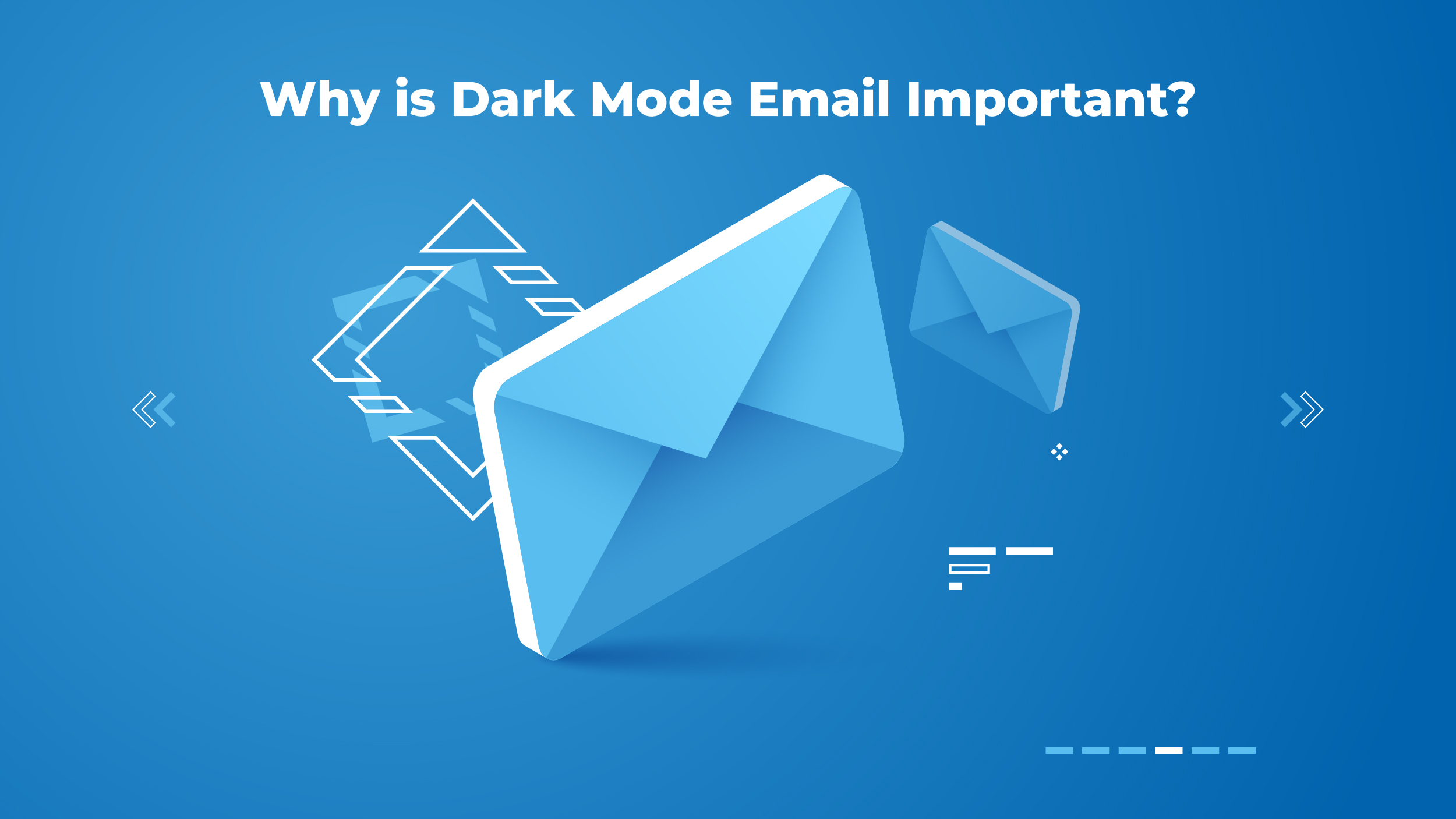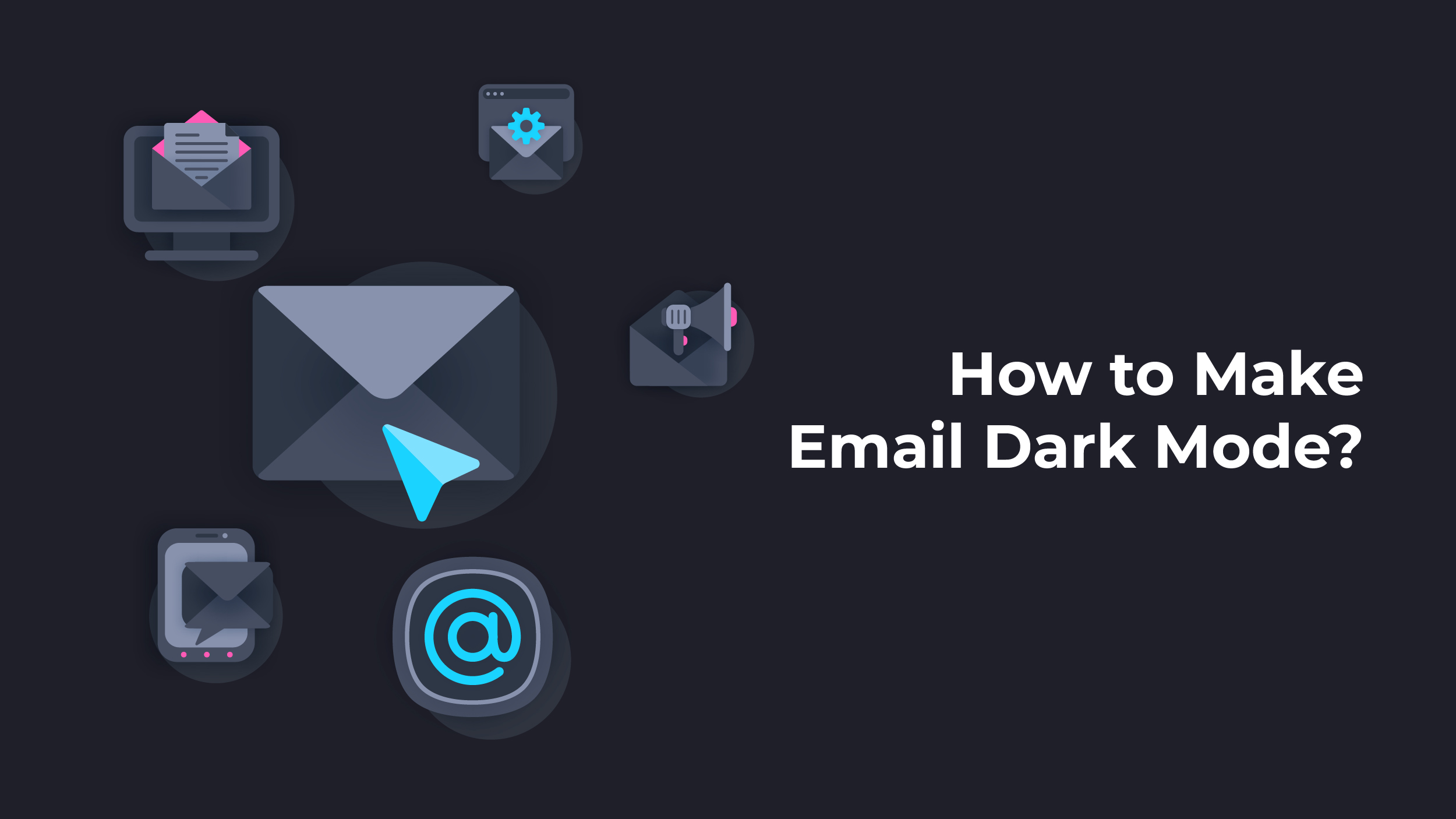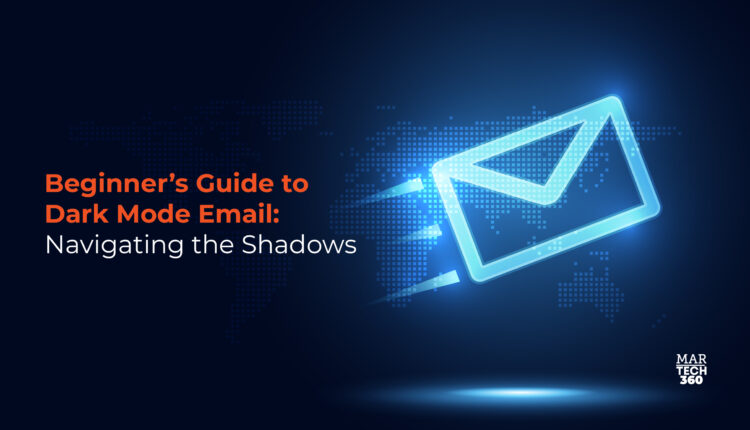Dark mode email has been a significant trend in the tech industry since Apple introduced it to its desktop email client in 2018. Following this, Dark Mode expanded to iOS Mail and was embraced by other major players like Gmail in the subsequent year.
According to Litmus’ Email Client Market Share, in 2022, an average of 35% of opens tracked utilized Dark Mode, indicating a consistent year-over-year adoption rate.
Dark Mode has firmly established its presence in the inbox. However, ensuring that emails appear appealing in this reading environment poses a considerable challenge for email marketers. Let’s talk more about email dark mode in detail in this beginner’s guide.
What is Dark Mode Email?
Dark mode changes the color scheme on your device, usually flipping white backgrounds and black text to black backgrounds and white text.
In 2019, Android and iOS implemented their respective dark settings, called Dark Theme and Dark Mode, which led to the widespread adoption of this feature by numerous popular apps such as Gmail, Facebook, and Microsoft Office. The dark settings offered by these operating systems influenced other developers to incorporate this feature into their own applications.
Certain email clients have the capability to automatically enable a “dark mode” feature. They achieve this by examining the presence of defined text and background colors, targeting specific CSS properties and HTML attributes, and adjusting them accordingly to create lighter or darker shades as needed.
Why is Dark Mode Email Important?
 Dark mode in emails holds significance for marketers primarily due to the fact that a considerable portion of their target audience has a strong preference for using dark mode.
Dark mode in emails holds significance for marketers primarily due to the fact that a considerable portion of their target audience has a strong preference for using dark mode.
According to an Android Authority poll, out of more than 2,500 votes, 81.9 percent of respondents stated that they actively utilize dark mode in various settings such as apps and phones. Another 9.9 percent reported switching between light and dark modes, while only 8.2 percent stated that they do not use dark mode at all.
However, it may be more appropriate to inquire as to why individuals are drawn towards the use of dark mode.
Dark mode email has been found to enhance accessibility, especially for individuals with cataracts and other visual impairments. According to a study conducted by Nielsen Norman Group, using dark mode can result in improved visual performance for such individuals. Additionally, it suggests that long-term use of light mode may be linked to the development of myopia.
Switching from light to dark mode at 100 percent screen brightness has been found by researchers at Purdue University to save, on average, 39 – 47 percent battery power. This also benefits our phone batteries.
However, it is important to mention that the majority of individuals tend to utilize the auto-brightness feature on their smartphones, which generally maintains the screen brightness at approximately 30 – 40 percent. When set at these levels, the battery conservation is only around 3 – 9 percent, which is relatively inconspicuous for most users.
Also Read: 4 Proven Strategies to Measure the Impact of Influencer Marketing ROI in 2024
Benefits of Dark Mode Email
Dark mode has gained a significant fanbase, which serves as a compelling reason to ensure that your emails are optimized to support this feature. Approximately 82% of users prefer using dark mode settings on both apps and smartphones.
Historically, dark mode has been well-received and advocated primarily by a technologically inclined audience. However, recent iPhone data reveals that users exhibit a reduction of more than 50% in device usage time when dark mode is activated. This demonstrates the enhanced efficiency of the user experience facilitated by dark mode.
Numerous assertions highlight the superiority of dark mode, with the following standing out as the top contenders:
- Eases strain on your vision
- Minimizes exposure to blue light
- Enhances power efficiency, leading to reduced battery consumption
- Offers greater flexibility in custom design options
How to Make Email Dark Mode?
 To enable dark mode email, there are various approaches you can adopt depending on the specific client you’re utilizing.
To enable dark mode email, there are various approaches you can adopt depending on the specific client you’re utilizing.
Outlook:
Outlook email dark mode is activated by default when utilizing the black theme. To transition to the black theme in Outlook, navigate to the toolbar, click on File, and then select Office Account. Within the Office Theme section, opt for Black. While reading a message, you can easily toggle dark mode on or off by utilizing the icon located at the top of the message window.
Gmail:
When using a computer, you have the option to set your background as the default theme, dark theme, or choose from other available themes. It’s essential to be aware that Gmail’s built-in dark mode might not precisely match the color or contrast settings of the rest of your device, necessitating potential adjustments.
General Email Design for Dark Mode:
When creating dark mode email, it is crucial to take into account various factors, including the logo, the contrast between the text and the background, and the utilization of colors that adhere to web accessibility standards.
Enabling the dark mode feature in email clients requires following specific procedures unique to each client. It is crucial to take into account the overall design and accessibility aspects when crafting emails that are compatible with dark mode.
Winding it Up
Dark mode email has emerged as a prominent trend in the digital landscape, offering users not only a visually appealing experience but also potential benefits such as reduced eye strain, minimized blue light exposure, and enhanced power efficiency. As it continues to gain traction across various email platforms, mastering the nuances of dark mode design and ensuring compatibility has become imperative for email marketers. With its undeniable impact on user experience and readability, dark mode email is undoubtedly here to stay, shaping the future of how we interact with our inboxes. Stay tuned for more insights and innovations in this evolving realm.


Comments are closed.